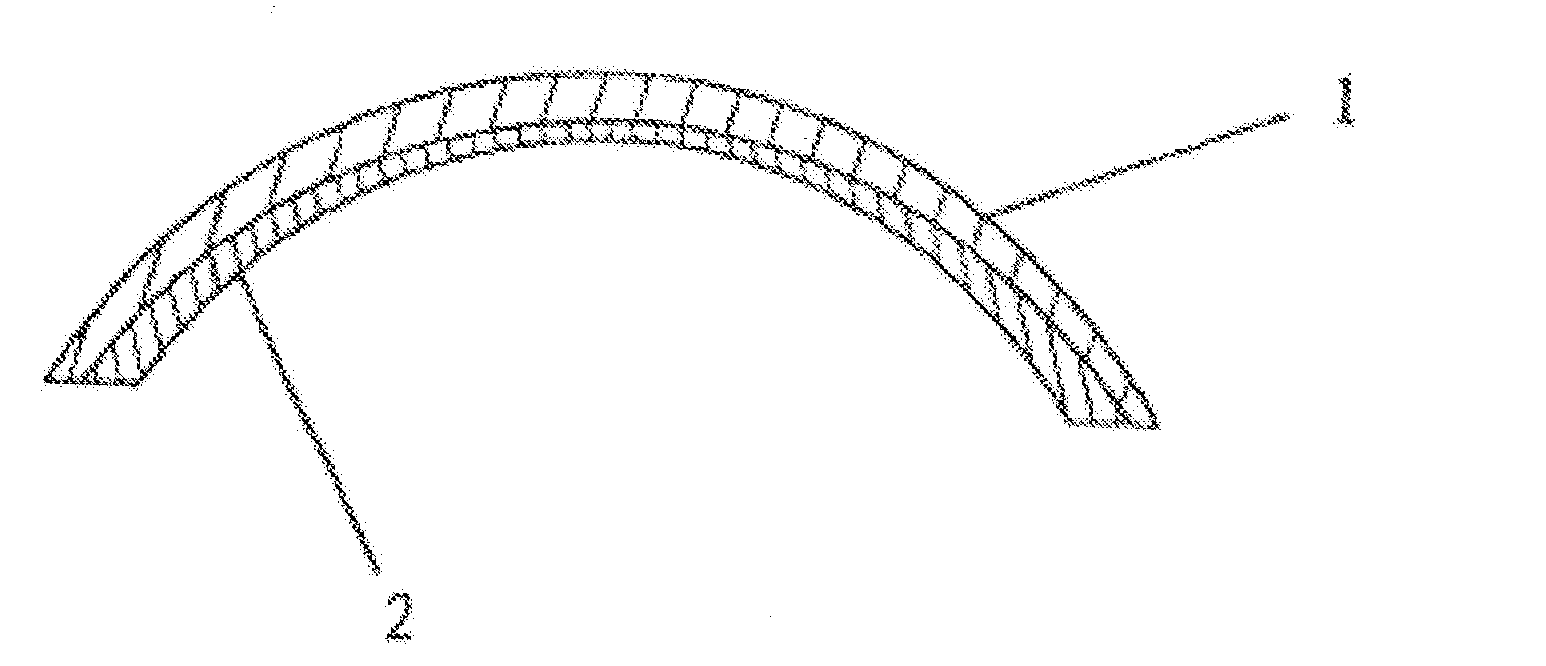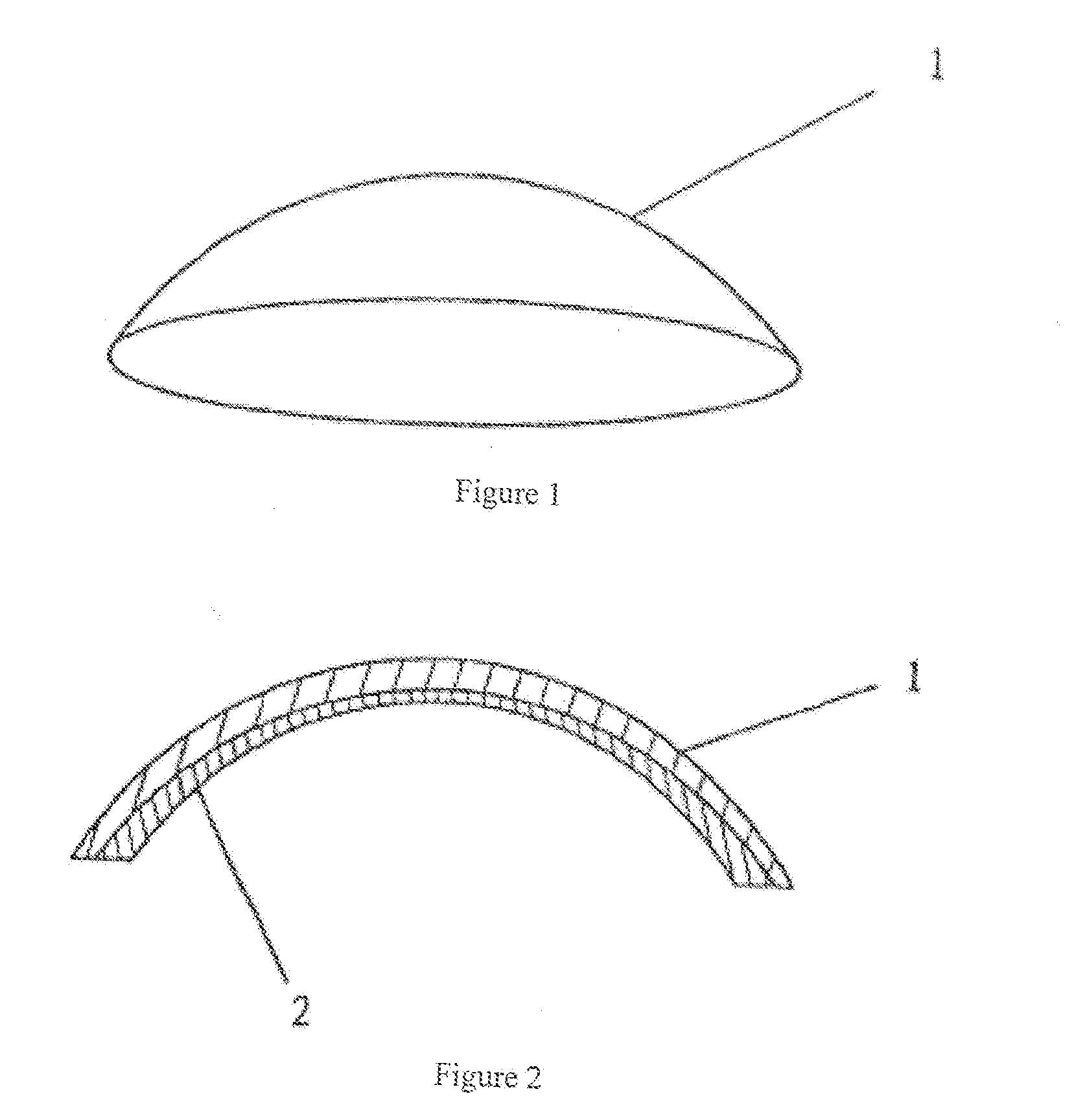Biological artificial cornea and method of making
a biochemical and artificial cornea technology, applied in the field of medical prosthesis, can solve the problems of failure of direct animal corneal transplantation, failure of additional research on the preparation of artificial corneas from animal corneas by low-temperature freezing and simple sterilization treatment, and achieve the effect of minimizing antigens
- Summary
- Abstract
- Description
- Claims
- Application Information
AI Technical Summary
Benefits of technology
Problems solved by technology
Method used
Image
Examples
example 1
[0027]As shown in FIGS. 1 and 2, tne biological artificial cornea comprises a substrate 1 prepared from an animal cornea by crosslinking and fixing with a non-aldehyde fixative and minimizing antigens. An active surface layer 2 is formed by coupling the inner (eyeball-facing) surface of substrate 1 with an active component consisting of a polypeptide or glycosaminoglycan capable of adhering to growth factors. One example of the polypeptide is the polypeptide obtained from the condensation of 16 lysines (K16), glycine (G), arginine (R), asparagic acid (D), serine (S), proline (P) and cysteine (C), and said glycosaminoglycan is hyaluronic acid, chondroitin sulfate, dermatan sulfate, heparin, acetylheparin sulfate or keratan sulfate, This biological artificial cornea can be made from the following steps:
[0028]1. Selection of materials: Fresh eyeballs are collected from healthy pigs and frozen in special preservation bottles before being transported.
[0029]2. Pretreatment: The animal cor...
PUM
| Property | Measurement | Unit |
|---|---|---|
| hydrogen bonding power | aaaaa | aaaaa |
| water-soluble | aaaaa | aaaaa |
| temperature | aaaaa | aaaaa |
Abstract
Description
Claims
Application Information
 Login to View More
Login to View More - R&D
- Intellectual Property
- Life Sciences
- Materials
- Tech Scout
- Unparalleled Data Quality
- Higher Quality Content
- 60% Fewer Hallucinations
Browse by: Latest US Patents, China's latest patents, Technical Efficacy Thesaurus, Application Domain, Technology Topic, Popular Technical Reports.
© 2025 PatSnap. All rights reserved.Legal|Privacy policy|Modern Slavery Act Transparency Statement|Sitemap|About US| Contact US: help@patsnap.com



